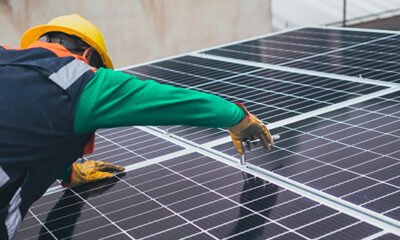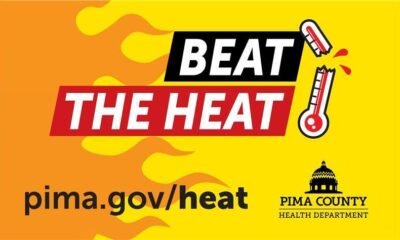Commentary
Arizona’s Heat Crisis: The Silent Epidemic We’re Overlooking

Arizona faces a critical public health crisis as extreme heat becomes increasingly common. Record temperatures are now the standard, leading to rising emergency department visits and fatalities. Recent reports indicate a sharp increase in heat-related illnesses, showcasing the urgent need for intervention beyond just a climate issue.
In 2024, Maricopa County experienced over 600 heat-associated deaths, predominantly among vulnerable populations such as the unsheltered, outdoor workers, and those lacking air conditioning. If such fatalities stemmed from an infectious disease, there would be a swift response. This same urgency must apply to heat-related deaths.
Future health professionals are calling on state leaders to act swiftly; current strategies are insufficient against this silent killer.
Certain groups are particularly at risk during heat waves. The elderly, children, outdoor laborers, and individuals experiencing homelessness bear the brunt of heat exposure. Notably, more than half of last year’s heat deaths in Phoenix were among the homeless. Local organizations are stepping up, but their reach is limited.
The tragic case of Dario Mendoza, a 26-year-old farmworker who succumbed to heat stroke in 2023, underscores the systemic failures in worker protections and health equity. Arizona must prioritize actions that safeguard these lives.
Current public health responses are reactive; they must move towards proactive solutions. Without preventative measures, hospitals will continue to be overrun during peak heat. Recommendations include:
- Extending operating hours for cooling centers.
- Implementing culturally and linguistically tailored public education campaigns.
- Enforcing safety standards for outdoor laborers, emphasizing hydration, rest, and shaded breaks.
Urban design also plays a crucial role in mitigating heat effects. Phoenix’s urban heat island effect, exacerbated by concrete-heavy, treeless infrastructure, necessitates action from local governments. Suggested improvements include:
- Investing in tree canopies for low-income neighborhoods.
- Utilizing reflective roofing and pavement materials.
- Promoting green infrastructure to help cool communities naturally.
Strategic urban planning must evolve into a health equity initiative rather than merely an aesthetic concern.
The long-term answer extends beyond increased air conditioning; it lies in climate resilience. Essential components include:
- Developing comprehensive municipal and state climate action plans.
- Integrating health metrics into climate data, such as tracking heat-related ER visits.
- Allocating public health budget funds toward heat mitigation efforts.
Addressing heat with the same intensity as we would an infectious disease involves data-driven action and systemic change.
Arizona has the potential to lead in crafting heat-resilient communities. A united front of public health officials, city planners, and elected representatives is essential. The vision is clear: an Arizona where no life is lost to heat because our systems are designed to protect and support all citizens.
The call to action is now — let’s turn this vision into reality.
Mohammad Alsobaie is a PharmD student specializing in clinical public health optimization.
Anna Abraham is an MPH candidate focusing on climate and community health.
Kelly Walter studies environmental health and public policy.
Giselle Vitcov emphasizes health equity and community interventions.
Jordan Brown investigates the environmental determinants of health disparities.


















